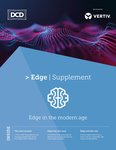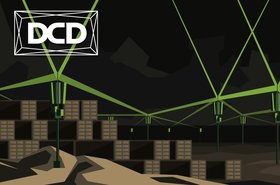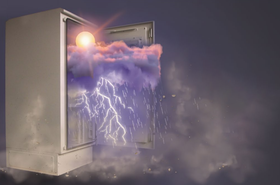Like all disruptive changes to data infrastructure, edge will impact the whole ecosystem. Now the transformation is edge driven, and the opening panel of Inside_Australia (13th May, 11am AEST) looks at how edge is changing the requirements and design of colocation.
We talked to Albert and James Wong of DC Alliance about these challenges. DC Alliance is a Singapore-based company that specializes in the development of tier certified colocation data centers and which is sponsoring the Inside_Australia event.
1 Edge is not a place
DC Alliance acquired Pier DC (now DCA | PIER) in Perth, Australia in 2020 as its first data center facility. Edge is not a ‘place’ but its definition is multi-layered so from a baseline geographic perspective, Perth itself - one of the most remote major cities in the world - is ‘edge’.
“We connect to the APAC hub - Singapore - and from there to the rest of the world. A DC is a part of the connected world. A Perth based DC is the edge to the APAC hub.”
2 Edge covers the last mile
Colo more commonly takes on a ‘core’ function where edge is represented by the spatial ‘last mile’ relationship between a colocation facility and its clients. The ‘last mile’ relationship has become predominant over the past 12 months as workplaces have splintered into home working. It will gain further traction as the 5G/IoT rollout takes place and as a greater volume of data is collected at the ‘edge’ before being routed to the core.
“What has caused a change for us is the sense that a data center itself now has to solve the last mile equation, which is the connection to your premises. Now, users are scattered all over the place and the only common denominator is the internet. I would like to say that we are now more relevant post COVID”.
3 Edge is not separate
The DC Alliance view of edge is not as separate, self-sufficient infrastructure but as part of an integrated eco-system which includes all the capabilities required to function.
“A DC on the edge is not ‘full function’ and will not adequately meet today’s demand for bandwidth, latency or service resilience. On-prem servers alone at the edge can be OK but ultimately, all of the data needs to backhauled into the main system for processing, so it always involves a core which needs to be fully-fledged colocation”
4 Edge needs connectivity
From this perspective, Perth makes strategic sense given the growth of submarine cables into the city and its improved connectivity into the high growth regions of South and South East Asia. The DC Alliance delivery model is based on the intersection of edge, cloud and colo via networks.
“Enablement at the edge means providing the connectivity, infrastructure and support mechanism to enable a meaningful and viable solution. The edge is connected to the cloud, the cloud is the data center. This interconnect and interaction will directly impact the efficacy of Edge computing”.
5 Edge is tech enabled
Edge is tech-enabled and enables the development of relevant services. For example, DC Alliance provides end-to-end connectivity from a data center to remote offices (via telco partners) and adds ‘back-up as a service’ to nodes within the network, taking DCaaS to the ‘last mile’.
This edge rollout relies on connectivity such as fixed wireless or microwave with compute/data harvesting at the edge, IoT platform hosting at the hub/core, connectivity via internet exchange and routing functions creating an ‘edge to the core’ value chain. The idea of the ecosystem as a value chain creates the business proposition:
“We have customers who worry about their production being away from them. Ultimately, you were able to solve their quality issue by giving them access to your production load as seamlessly as possible. Once we saw there was a connection issue with the last mile, whether it’s through fixed wireless the NBN or even dark fibre, you are still connected to your IT production”.




